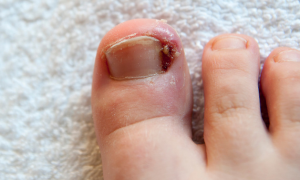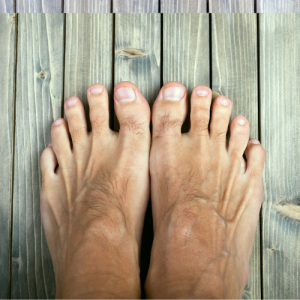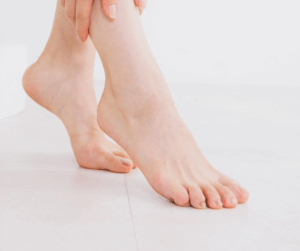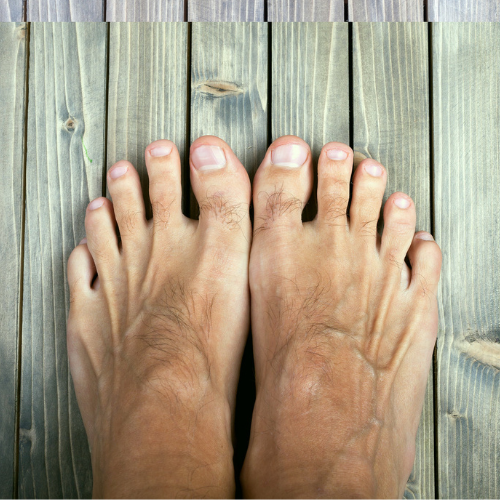Ingrown toenails might seem like a minor inconvenience, but for those who suffer from them, they can be a persistent source of pain and discomfort. If you’ve ever experienced the throbbing ache or the tenderness around your toenail, you know just how aggravating this condition can be.
What Are Ingrown Toenails?
Ingrown toenails occur when the corners or edges of the toenail grow into the surrounding soft tissue, causing irritation, inflammation, and sometimes infection. Typically, toenails grow straight out, but certain factors can cause them to curve and embed themselves into the skin. While the big toe is the most common site for ingrown toenails, they can affect any toe.
Causes of Ingrown Toenails
Several factors can contribute to the development of ingrown toenails:
- Improper Nail Trimming: One of the primary causes of ingrown toenails is improper nail trimming. Cutting nails too short or rounding them off too much can encourage the nails to grow into the skin. At our MedFootSpa we have licensed technicians certified to cut toenails prone to ingrowns.
- Heredity: Genetics play a role in determining the shape and structure of your toenails. If you have a family history of ingrown toenails, you may be more predisposed to developing them yourself.
- Shoe Pressure: Wearing tight or ill-fitting shoes can exert pressure on the toes, pushing the nails into the surrounding skin.

- Repeated Trauma: Activities that involve repetitive pressure or trauma to the feet, such as running or playing sports, can increase the likelihood of developing ingrown toenails.
Symptoms of Ingrown Toenails
The following symptoms may indicate the presence of an ingrown toenail:
- Pain: Discomfort or pain along the edge of the toenail, especially when pressure is applied.
- Redness and Swelling: Inflammation and swelling around the affected toenail.
- Drainage: Pus or clear fluid draining from the area.
- Odor: Foul smell due to bacterial infection.
- Prominent Skin Tissue: Overgrowth of skin around the ingrown toenail, known as proud flesh.
Home Treatment for Ingrown Toenails
If you suspect an infection due to an ingrown toenail, you can try the following home remedies:
- Warm Soaks: Soak your foot in warm water mixed with Epsom salt or mild soap to help reduce inflammation and cleanse the area.
- Antiseptic Application: Apply an antiseptic solution, such as hydrogen peroxide or tea tree oil, to the affected area to prevent infection.
- Bandaging: After soaking and drying your foot, apply a sterile bandage or adhesive strip to protect the area from further irritation.
It’s essential to note that individuals with certain medical conditions, such as diabetes or peripheral vascular disease, should avoid self-treatment and seek medical attention promptly.
 When to Visit a Podiatrist
When to Visit a Podiatrist
While home remedies can provide temporary relief for ingrowns, it’s essential to consult a podiatrist if you experience:
- Persistent Drainage or Redness: If the symptoms persist or worsen despite home treatment.
- Underlying Health Conditions: Individuals with diabetes or poor circulation should seek immediate medical attention for ingrown toenails to prevent complications.
- Chronic Ingrown Toenails: If ingrown toenails are a recurring problem, a podiatrist can offer long-term solutions to prevent future occurrences.
To schedule an appointment with Dr. Rappette DPM, FACFAS of Foot & Ankle Centers in Morris or Yorkville today call (815) 942-9050 or (630) 553-9300.
Diagnosis and Treatment
During your visit to a podiatrist, they will assess the severity of your ingrown toenail and recommend appropriate treatment. This may involve:
- Nail Trimming: The podiatrist will carefully trim the ingrown portion of the nail to relieve pressure on the surrounding tissue.
- Medication: Depending on the presence of infection, your podiatrist may prescribe topical or oral antibiotics to treat the infection.
- Surgical Intervention: In severe cases or for chronic ingrown toenails, your podiatrist may recommend a procedure to remove a portion of the nail or the nail bed to prevent recurrence.
Prevention of Ingrown Toenails
Taking proactive steps to prevent ingrown toenails can help avoid future discomfort:
- Proper Nail Trimming: Cut your toenails straight across and avoid cutting them too short. Use toenail clippers and avoid rounding off the corners excessively.
- Footwear: Choose shoes with a wide toe box to prevent crowding of the toes. Avoid shoes with narrow or pointy toe boxes that can squeeze the toes together.
- Gentle Care: Handle your feet with care and avoid ripping or tearing the edges of your toenails.
By following these preventive measures and seeking timely treatment from a podiatrist, you can effectively manage and alleviate the symptoms of ingrown toenails.









